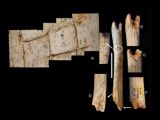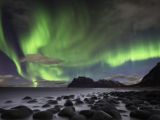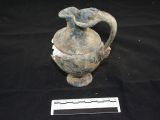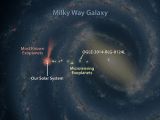It’s Sunday again so, as per usual, the time is right to sit back, relax and brace ourselves for another busy workweek that will very soon be upon us.
Meanwhile, let’s take a few minutes to review the most important science news of the past few days, cool finds or announcements and all.
10. It is possible that Neanderthals were cannibals
Several Neanderthal bones unearthed from an archaeological site in France show signs of fracturing and cutting, all done post-mortem. Of these bones, a femur fragment was left behind by a 9- or maybe 10-year-old child.
Paleontologists who have had the chance to examine the Neanderthal remains suspect that the markings on the bones might be evidence of cannibalism. Thus, they believe that, when food was scarce, Neanderthals turned cannibals to survive.
One other possibility is that the bones were cut and fractured not because somebody was especially hungry and had nothing else to eat, but as part of some ancient ritual. Why the young child was also butchered remains a mystery.
9. Birth of black auroras explained
There’s more to auroras than meets the eye, researchers explain in a paper published earlier this week. Apart from the bright, colorful beams that we are all too familiar with, there’s also such a thing as black auroras.
These so-called black auroras are basically dark patches in the sky. They crisscross regular auroras and, being dark, they strike inexperienced observers as a whole lot of nothing. The thing is that, as it turns out, they aren’t exactly nothing.
Black auroras are a sign of electrons being sucked out from Earth’s atmosphere and leaving cavities behind them. Colorful auroras, on the other hand, occur when electrons coming from space collide with atoms in the atmosphere.
8. Futuristic camera could run indefinitely
It just so happens that batteries could one day become obsolete, all thanks to a team of scientists who developed a futuristic camera hailed as the world’s first device able to power itself and, consequently, run indefinitely.
In a way, this one-of-a-kind camera is not all that different from the ones already in use, meaning that it relies on teeny tiny devices known as photodiodes to measure light intensity and to record and read out images.
The reason it needs no battery or any other power source to function is because the same photodiodes that let it snap pictures also serve to convert light into electricity. Essentially, this camera makes its own energy.
7. Albino dolphin found to blush when emotional
Towards the end of last year, fishermen in Japan captured a rare albino dolphin. The marine mammal, a photo of which is included in the gallery below, is now held captive at the Taiji Whale Museum in the country’s Wakayama Prefecture.
Interestingly, researchers say that when feeling angry, sad, excited or otherwise emotional, the albino dolphin turns pink. According to its trainers and the specialists who have so far witnessed this behavior, the animal basically blushes.
It is understood that the albino dolphin turns pink when experiencing strong emotions because feelings such as anger, sadness and excitement correlate with increased blood flow, especially in the vessels right under its skin.
6. Roman-era grave found in a field in the UK
This week, archaeologists announced the discovery of a Roman-era grave in a field in the village of Kelshall in North East Hertfordshire, UK. The grave, said to date back to around 200 AD, sits close to the remains of a villa and a temple of sorts.
While excavating the grave, researchers came across several artifacts, including jugs, dishes and even hobnails from a millennia-old pair of shoes. They also found a vessel containing cremated human remains.
This Roman-era grave unearthed in the UK measures about 6.2 by 5.2 feet (roughly 1.9 meters by 1.6 meters). Judging by the artifacts found inside it, archaeologists suspect that the burying place was built for a wealthy individual.
5. Muscle-building supplements linked to cancer
According to a new research paper, there is evidence that people who turn to all sorts of pills and shakes to help them build muscle mass and bulk up have an increased risk to develop testicular cancer.
Thus, scientists say that, having assessed the overall health condition of several hundred volunteers, they found that those who were in the habit of using muscle-building supplements had higher chances to be diagnosed with said condition.
Interestingly, it appears that an individual’s risk to get testicular cancer increases the more different types of muscle-building pills and shakes they consume, and the more time they stick to such a diet.
4. Mind-bogglingly distant planet spotted by telescopes
With the help of NASA’s Spitzer Space Telescope and the Optical Gravitational Lensing Experiment’s Warsaw Telescope at the Las Campanas Observatory in Chile, astronomers managed to spot a freakishly distant planet.
The celestial body in question now goes by the name OGLE-2014-BLG-0124L. It is a gas giant, and as illustrated in the map available in the gallery below, it sits close to the core of the Milky Way, some 13,000 light-years away.
Astronomers expect that, in the years to come, they will discover plenty other planets orbiting stars in our home galaxy. The more such celestial bodies they find, the more they will know about the anatomy of the Milky Way.
3. WWII-era vessel found off the coast of California, US
This Thursday, underwater explorers announced the discovery of a World War II-era aircraft carrier in the waters off the coast of California, US. The vessel, identified as the USS Independence, sunk about 64 years ago.
Sonar images obtained with the help of an unmanned vehicle show that, despite having spent decades lying on the ocean floor, the USS Independence is in very good shape. In fact, the vessel appears to still house a plane in its hangar bay.
Historians say that, during World War II, the USS Independence was involved in military operations in the Pacific. Before it was finally disposed of for being too old and crippled, it was subjected to atomic bomb tests.
2. Study found what happens when we crack our knuckles
Joy to the world as yet another of life’s little mysteries has been solved by science. Not to beat about the bush, researchers claim to have at long last figured out why our knuckles make a distinctive popping sound when we crack them.
In a series of experiments, the specialists behind this daring research project kindly asked one of their colleagues to crack his knuckles and used an MRI machine to look inside his body while he was complying.
They found that the popping sound associated with cracking knuckles is due to the formation of a cavity inside the joint. In turn, this cavity forms when the surface of the joint suddenly separates and there is no liquid to fill in the void.
1. New Horizons delivered the first ever color view of Pluto
This week, NASA’s New Horizons probe, which left Earth nearly a decade ago, in January 2006, delighted us all when it delivered the first ever color view of Pluto. Bonus: Charon, the dwarf planet’s largest moon, is also visible in the picture.
Worry not, you’ll find this historic image taken by the New Horizons spacecraft in the gallery accompanying this article. Fair warning though, it’s rather blurry and not quite as colorful as some might imagine it to be.
This first ever color view of dwarf planet Pluto and its accompanying moon Charon was taken from a distance of 71 million miles (115 million kilometers). As it moves closer to these celestial bodies, New Horizons will deliver ever clearer images.
Well, there you have it, this week’s best and coolest science news. To keep tabs on what researchers are up to these days, be sure to check this page again next Sunday.

 14 DAY TRIAL //
14 DAY TRIAL // 









